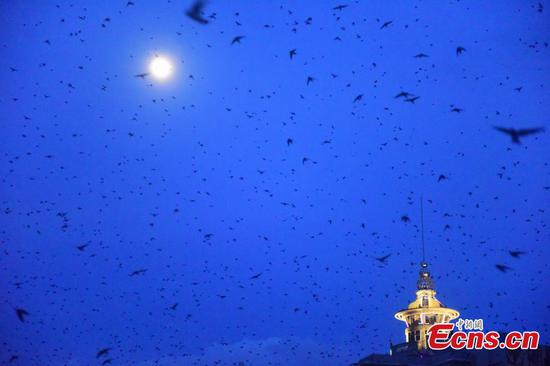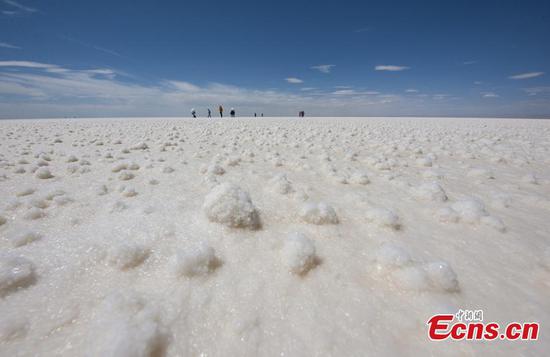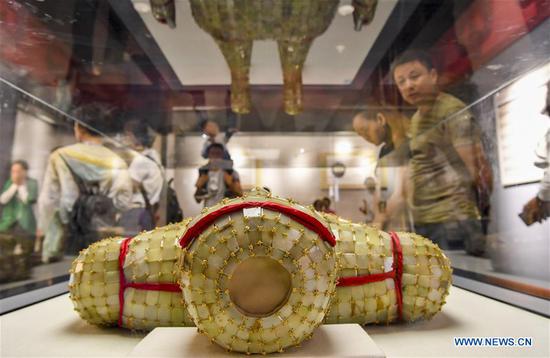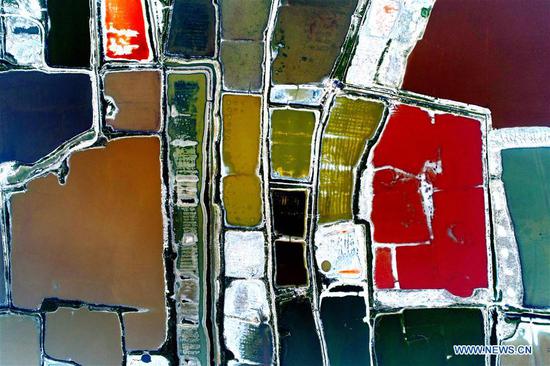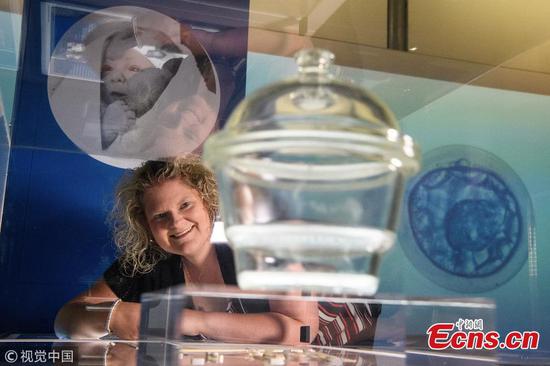
Chinese biologist Pan Wenshi investigates white dolphin activities in Sanniang Bay. (PHOTO/XINHUA)
Pan has long been committed to bioscience studies and played an important role in protecting the giant panda and white-headed langur-one of the rarest primates in the world. His work has won him awards both at home and abroad, including the J. Paul Getty Award for Conservation Leadership from the World Wildlife Fund.
Pan became aware of Sanniang Bay's marine mammal population after attending a seminar about them in Guangxi in 2004.
"Expert opinions varied when it came to estimating the number of white dolphins in the area," Pan, 81, recalls.
Some said there were 200 of the mammals in the Sanniang Bay area, while others put the figure at over 1,000.
"I could only spot the ones aged from 9 to 11, with my own eyes at that time," Pan says.
This inconsistency-and a life-changing childhood encounter with the mammals-spurred Pan to settle down in the bay area and study the dolphins in more detail.
One summer, when he was 10 years old, and while swimming off the coast of Shantou, Guangdong province, Pan found himself drowning.
On the verge of death, he was suddenly rescued by two dolphins who kept Pan's head above the water as they carried him back to shore.
As his aquatic skills matured, Pan continued swimming in the sea, where he often found a gray-white dolphin by his side.
"I could see its beady black eyes and the rows of cone-shaped teeth in its mouth," he recalls.
"It didn't seem to object when I held my hand out to touch its slippery, tight skin."
However, things were rough at the beginning when Pan began to study the Chinese white dolphins, as little was known about their subaquatic life and funding was not readily available.
"I had to go out to sea with the local fishermen when they went out in their small fishing boats," Pan says. "The ride was bumpy and I threw up a lot."
Pan only caught a glimpse of his first dolphin after three days at sea.

















